Abstract
Nine pigeons were trained to discriminate a moving stimulus from a stationary stimulus. In one experiment, the stimulus was a rotating disc with radial stripes. In a second experiment, the stimulus was a vertically moving film strip with horizontal bars. Several psychophysical procedures were used to determine the minimal detectable velocity of movement. The detection thresholds for most of the pigeons fell in the range of 4.4 to 6.5 millimeters per second, corresponding to a retinal velocity of 4.1 to 6.01 degrees per second. A signal detection analysis of the psychophysical data indicated systematic changes in response bias that were related to the ordinal position of the stimulus velocity in the sequence.
Full text
PDF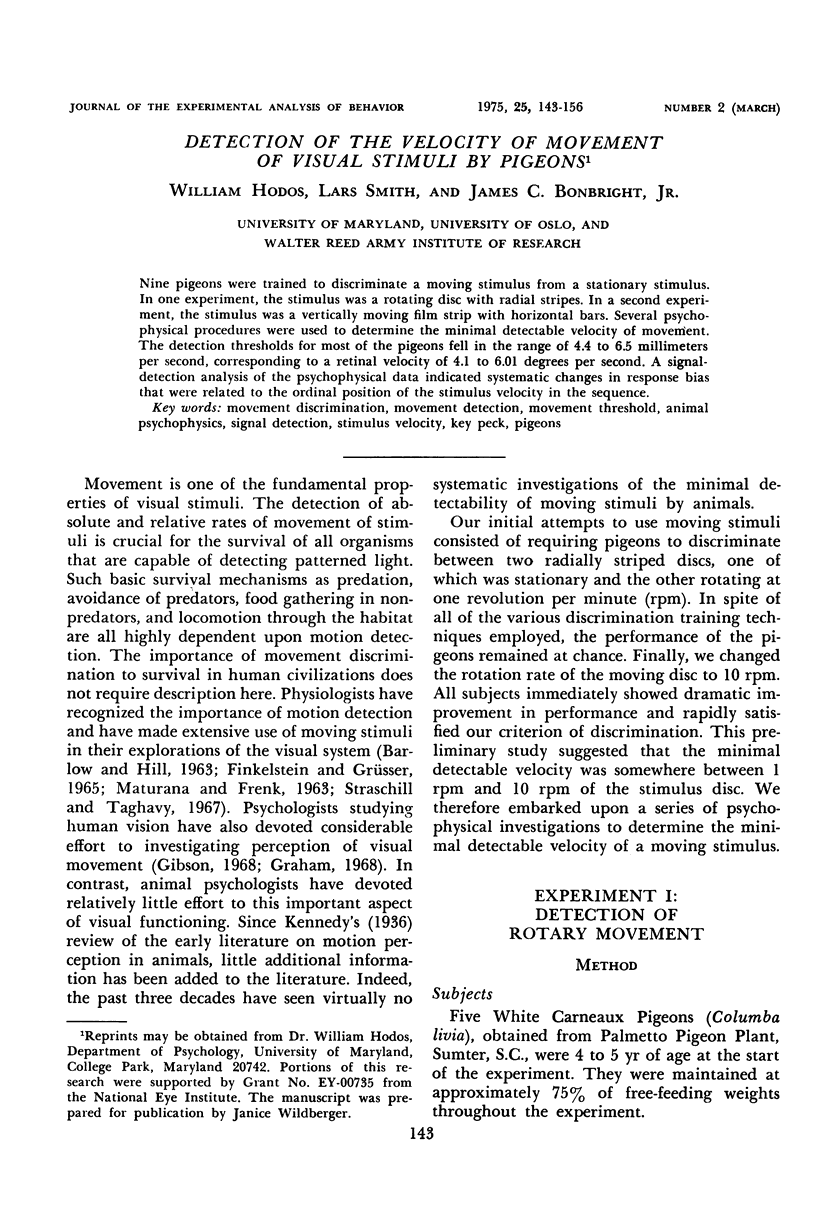
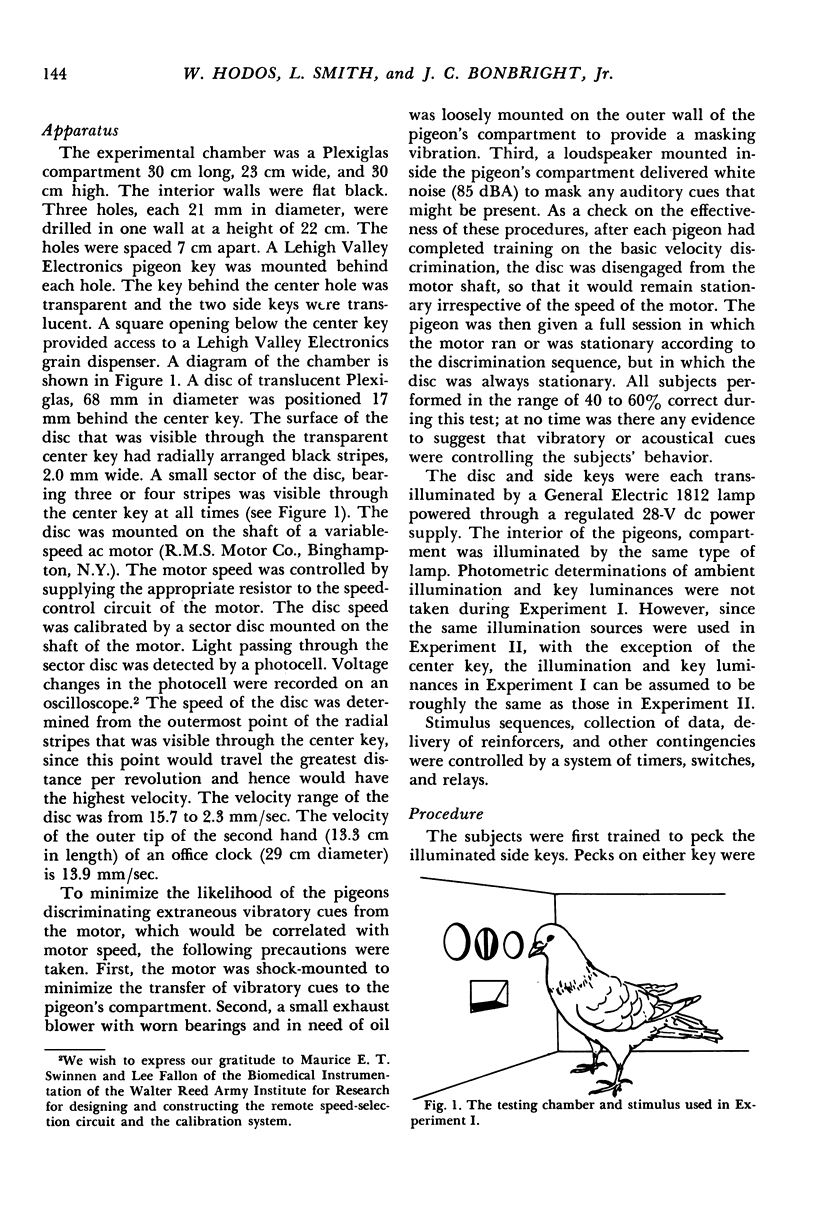
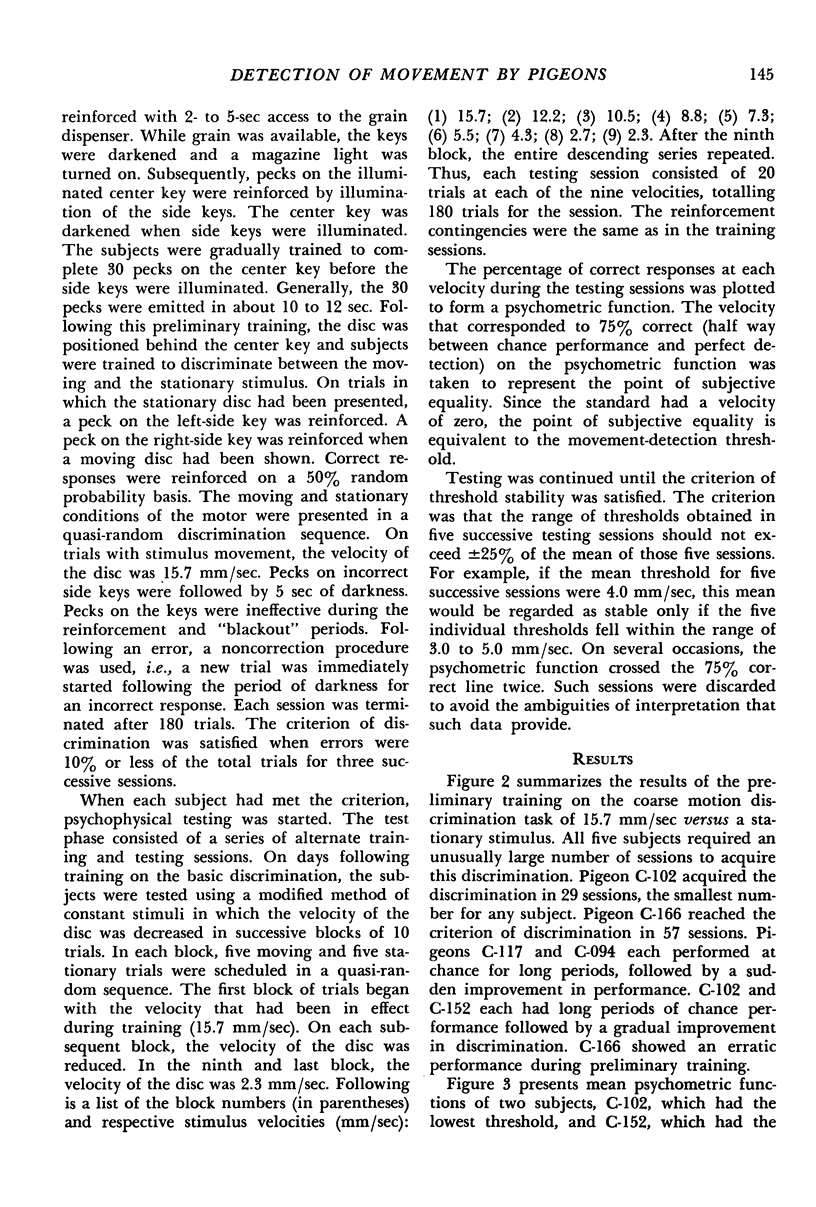
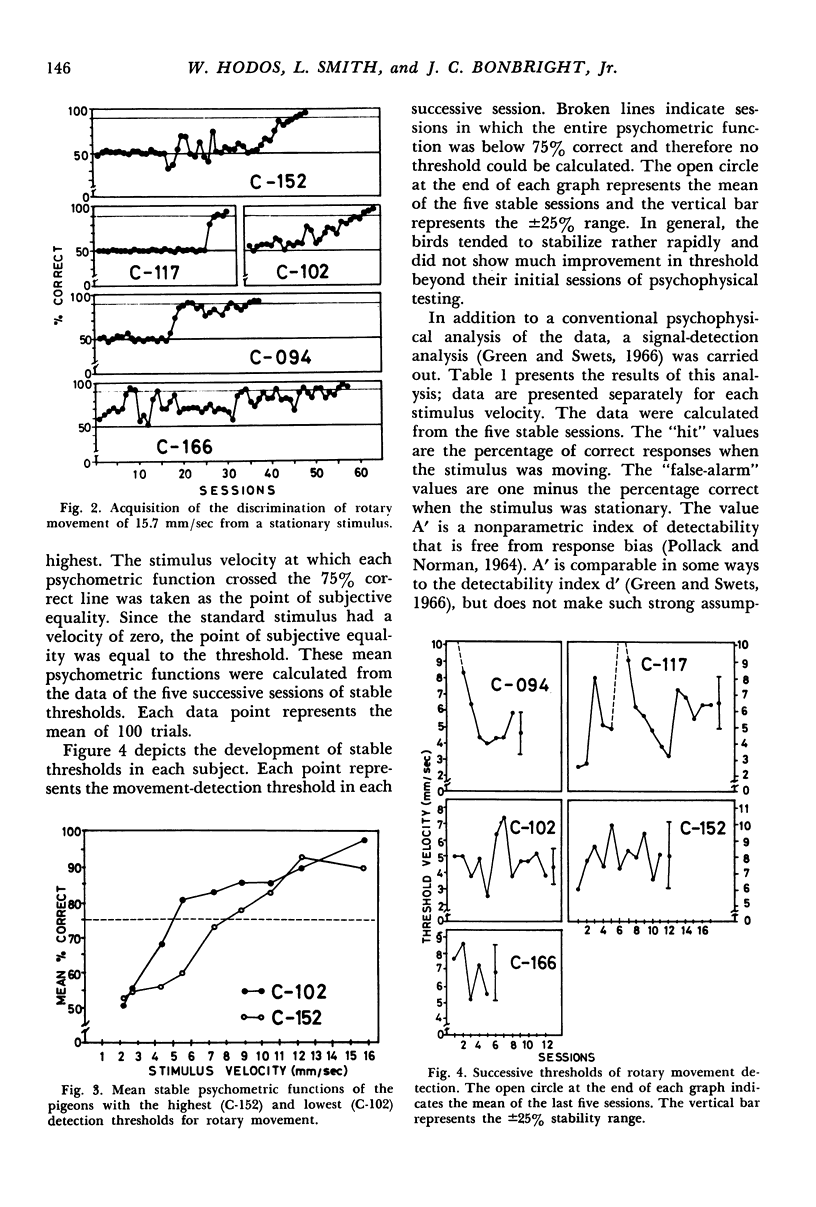
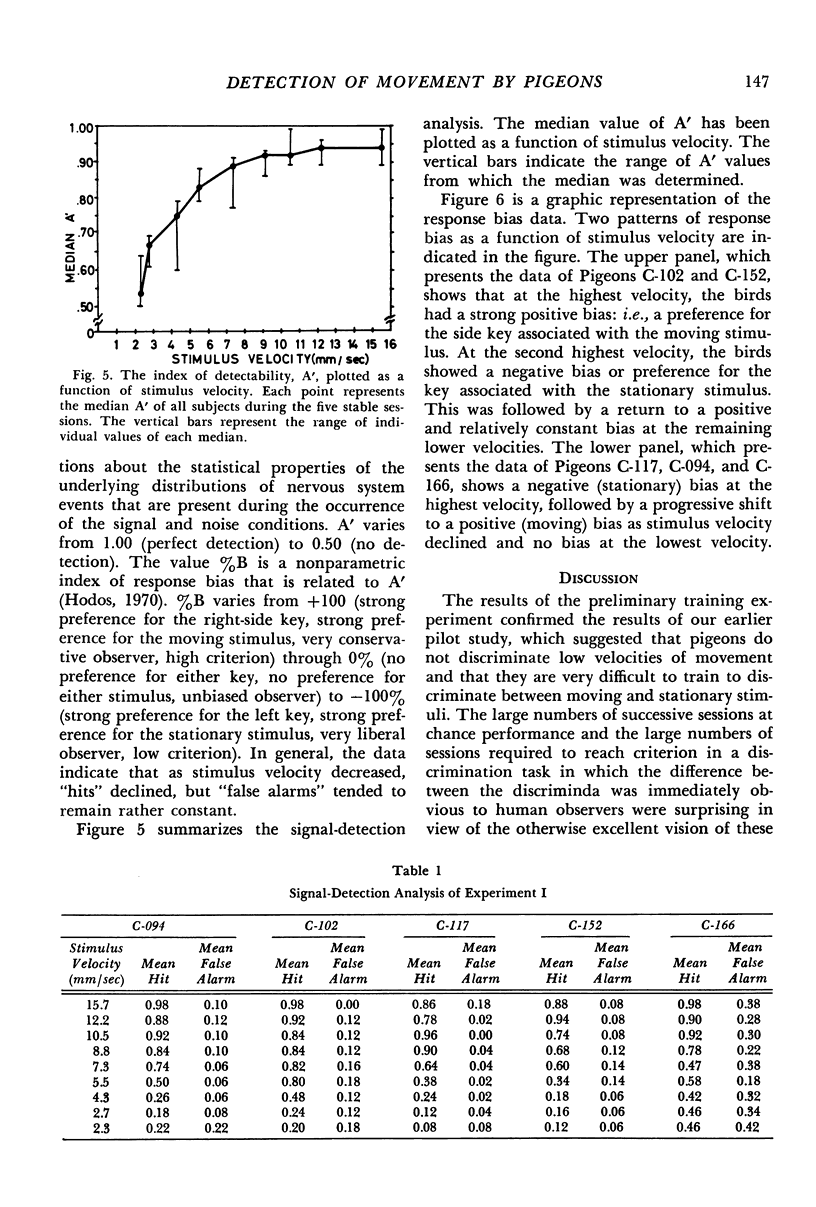
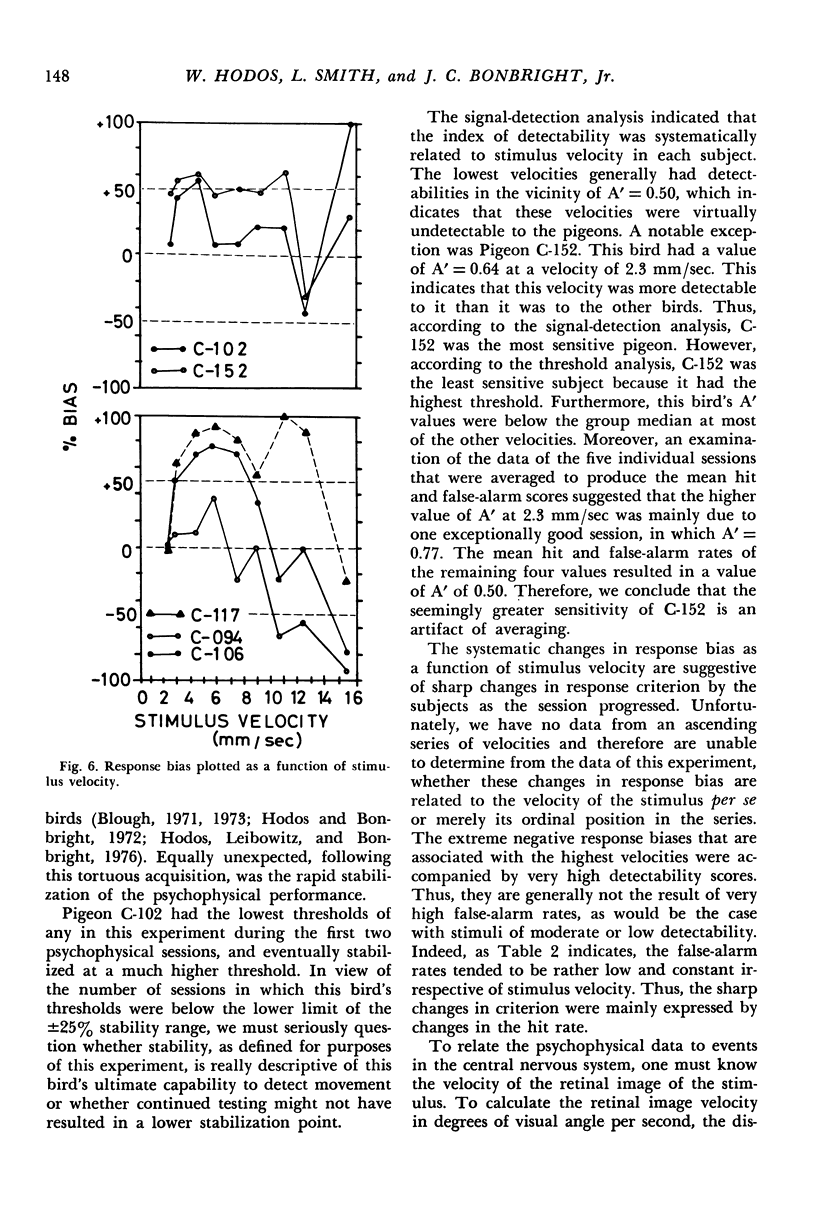
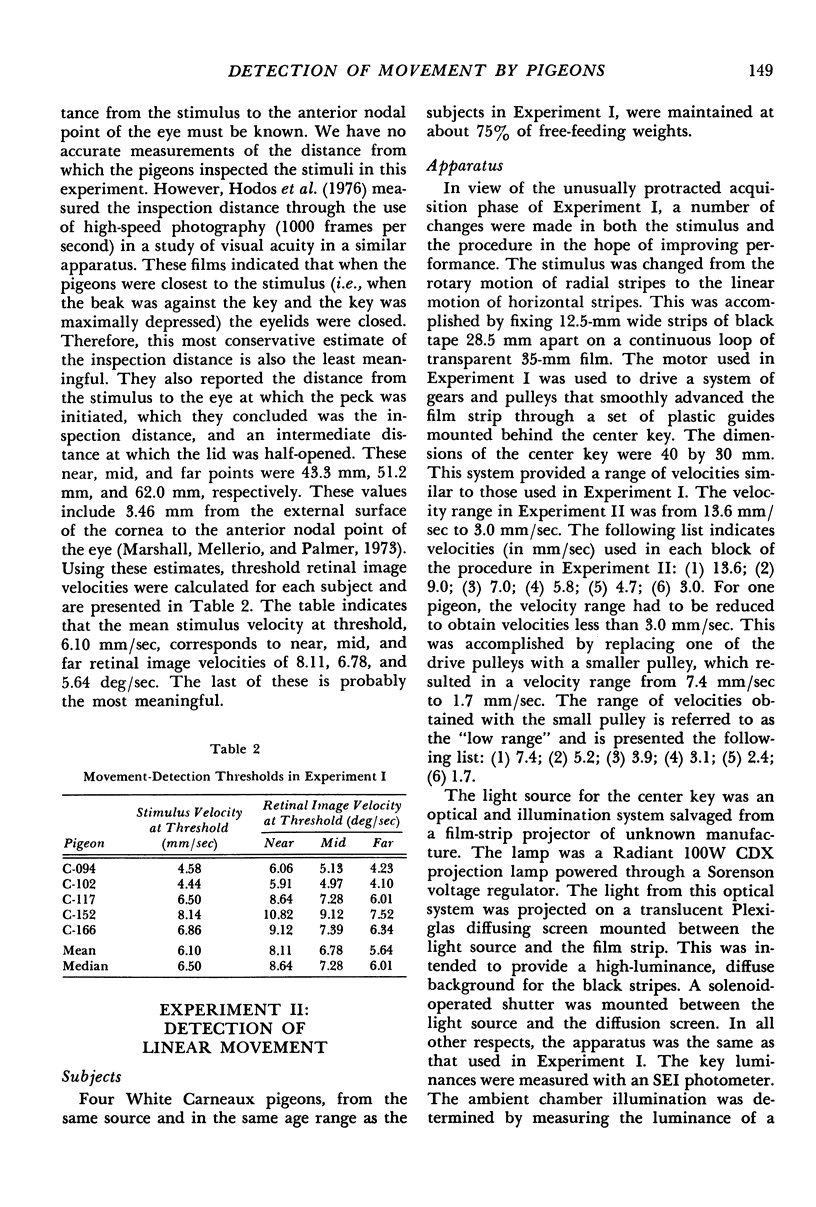

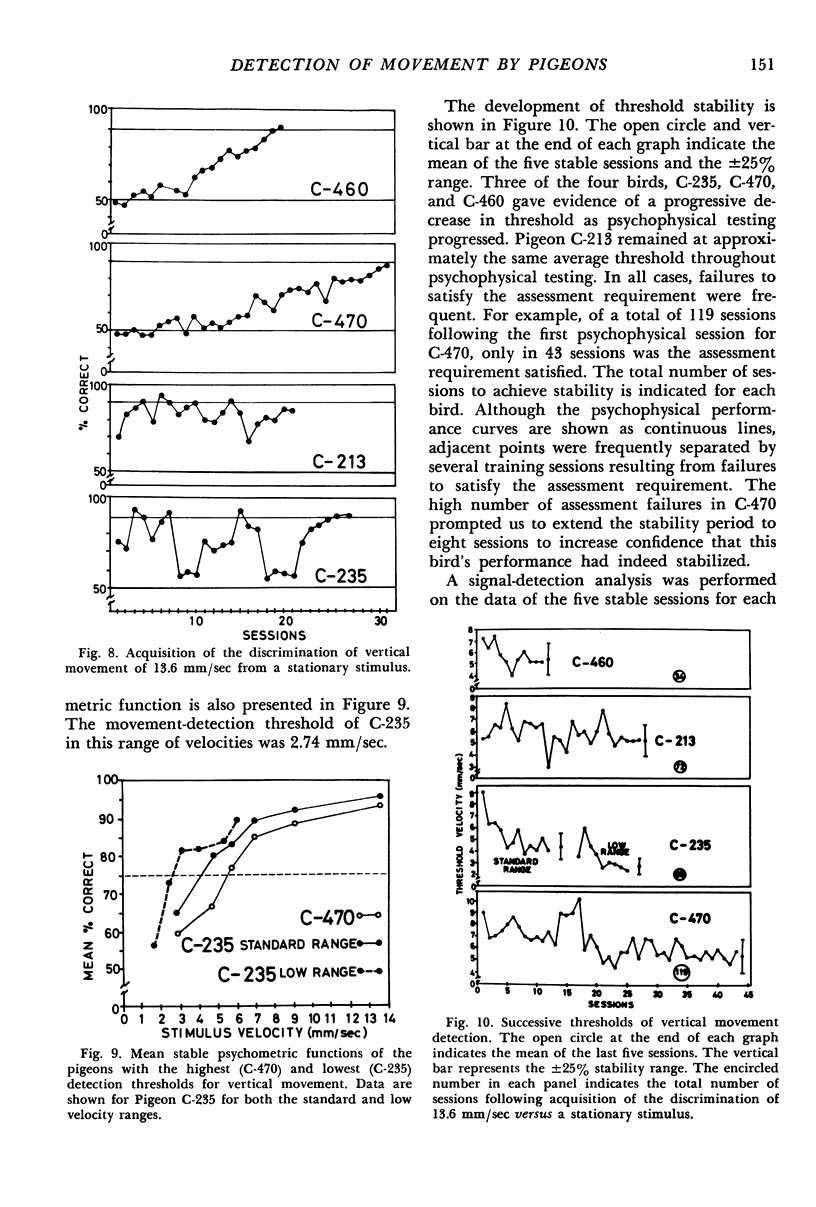
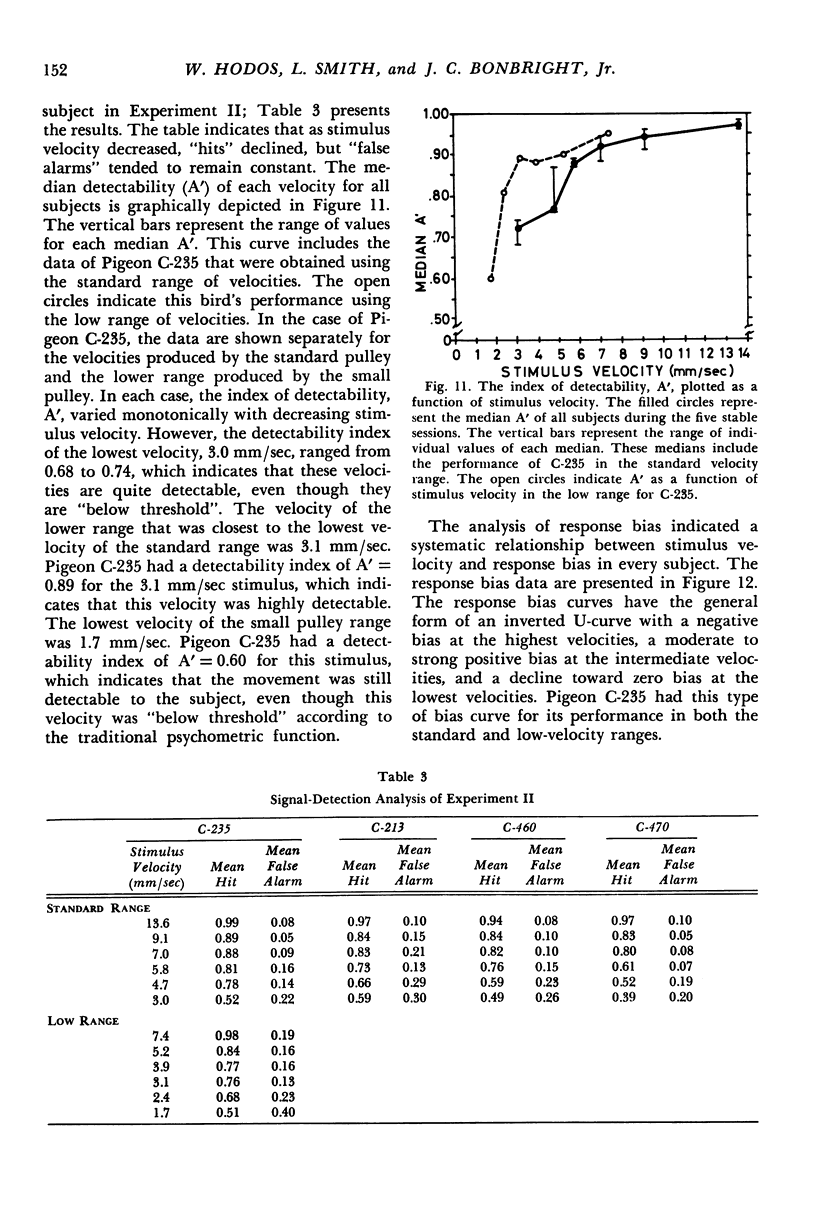
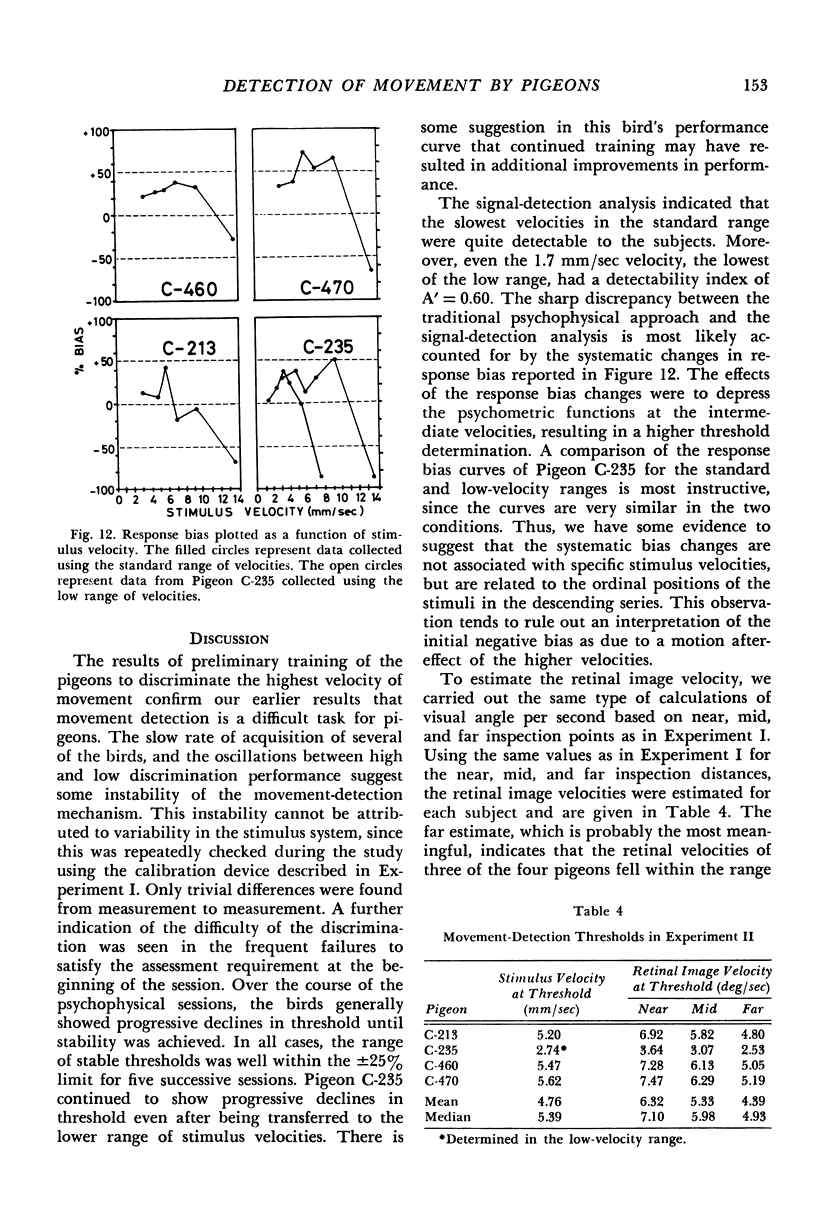
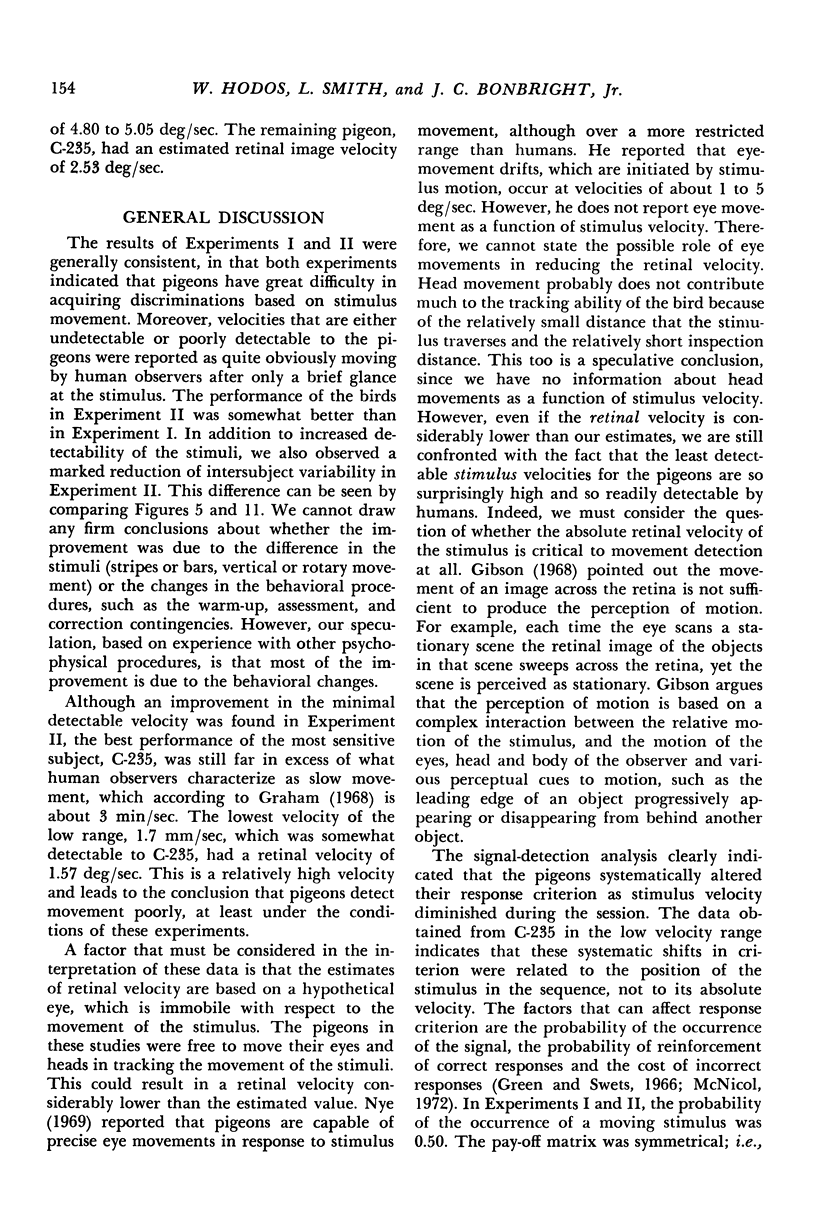
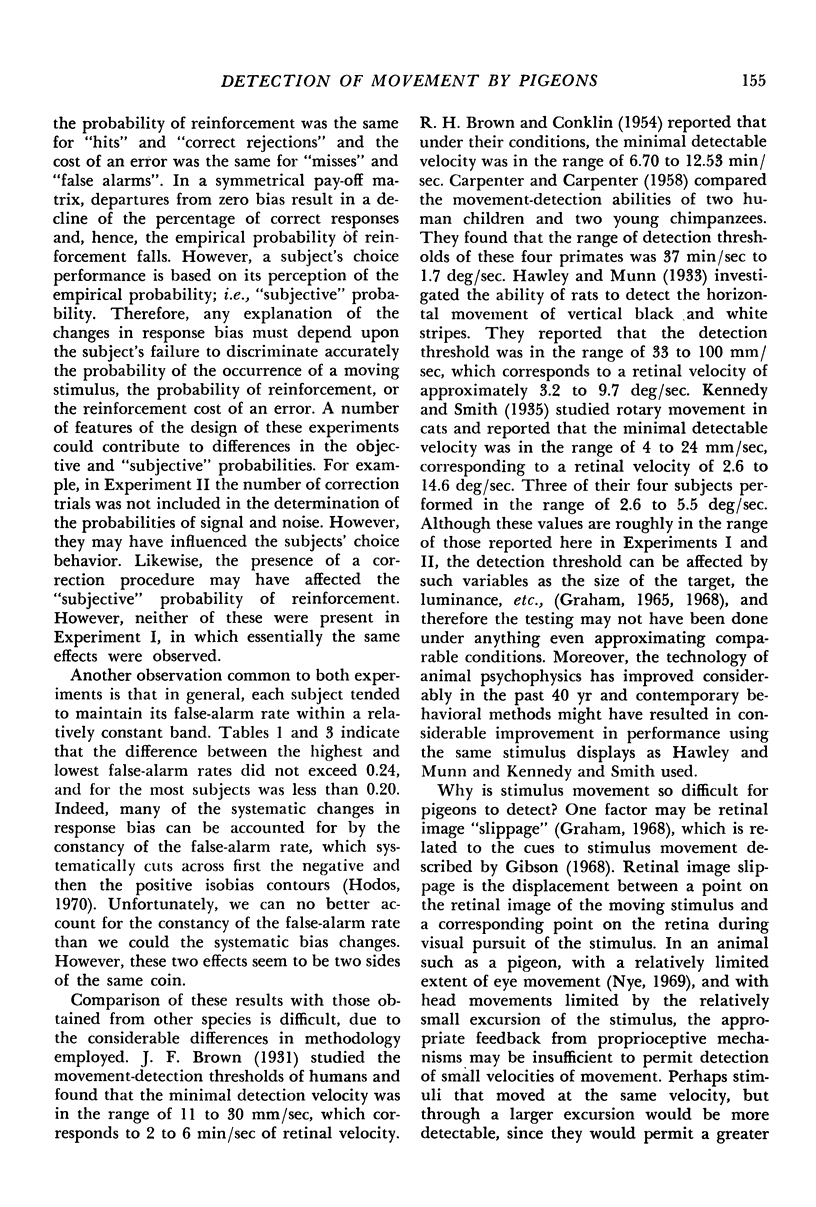
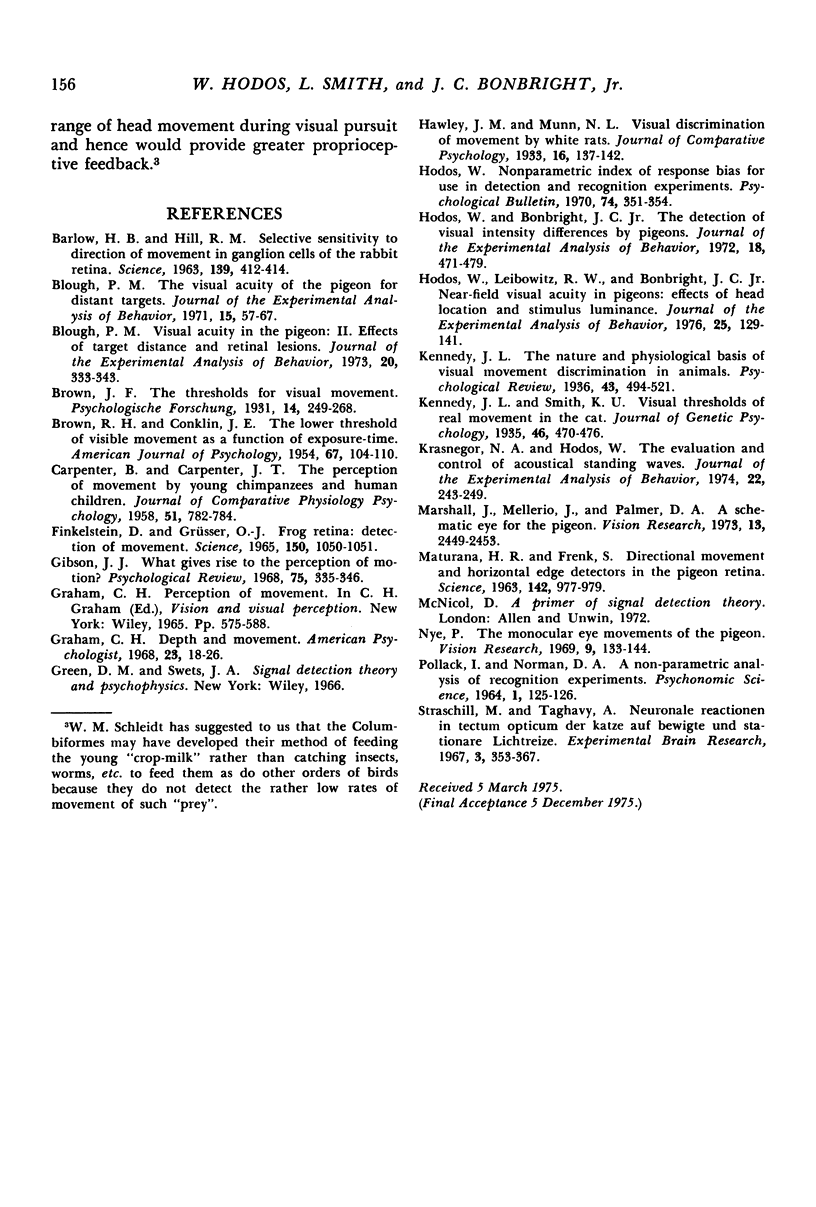
Selected References
These references are in PubMed. This may not be the complete list of references from this article.
- BARLOW H. B., HILL R. M. Selective sensitivity to direction of movement in ganglion cells of the rabbit retina. Science. 1963 Feb 1;139(3553):412–414. doi: 10.1126/science.139.3553.412. [DOI] [PubMed] [Google Scholar]
- BROWN R. H., CONKLIN J. E. The lower threshold of visible movement as a function of exposure-time. Am J Psychol. 1954 Mar;67(1):104–110. [PubMed] [Google Scholar]
- Blough P. M. The visual acuity of the pigeon for distant targets. J Exp Anal Behav. 1971 Jan;15(1):57–67. doi: 10.1901/jeab.1971.15-57. [DOI] [PMC free article] [PubMed] [Google Scholar]
- Blough P. M. Visual acuity in the pigeon. II. Effects of target distance and retinal lesions. J Exp Anal Behav. 1973 Nov;20(3):333–343. doi: 10.1901/jeab.1973.20-333. [DOI] [PMC free article] [PubMed] [Google Scholar]
- CARPENTER B., CARPENTER J. T. The perception of movement by young chimpanzees and human children. J Comp Physiol Psychol. 1958 Dec;51(6):782–784. doi: 10.1037/h0038879. [DOI] [PubMed] [Google Scholar]
- Finkelstein D., Grüsser O. J. Frog retina: detection of movement. Science. 1965 Nov 19;150(3699):1050–1051. doi: 10.1126/science.150.3699.1050. [DOI] [PubMed] [Google Scholar]
- Gibson J. J. What gives rise to the perception of motion? Psychol Rev. 1968 Jul;75(4):335–346. doi: 10.1037/h0025893. [DOI] [PubMed] [Google Scholar]
- Hodos W., Bonbright J. C., Jr The detection of visual intensity differences by pigeons. J Exp Anal Behav. 1972 Nov;18(3):471–479. doi: 10.1901/jeab.1972.18-471. [DOI] [PMC free article] [PubMed] [Google Scholar]
- Hodos W., Leibowitz R. W., Bonbright J. C., Jr Near-field visual acuity of pigeons: effects of head location and stimulus luminance. J Exp Anal Behav. 1976 Mar;25(2):129–141. doi: 10.1901/jeab.1976.25-129. [DOI] [PMC free article] [PubMed] [Google Scholar]
- Krasnegor N. A., Hodos W. The evaluation and control of acoustical standing waves. J Exp Anal Behav. 1974 Jul;22(1):243–249. doi: 10.1901/jeab.1974.22-243. [DOI] [PMC free article] [PubMed] [Google Scholar]
- MATURANA H. R., FRENK S. DIRECTIONAL MOVEMENT AND HORIZONTAL EDGE DETECTORS IN THE PIGEON RETINA. Science. 1963 Nov 15;142(3594):977–979. doi: 10.1126/science.142.3594.977. [DOI] [PubMed] [Google Scholar]
- Marshall J., Mellerio J., Palmer D. A. A schematic eye for the pigeon. Vision Res. 1973 Dec;13(12):2449–2453. doi: 10.1016/0042-6989(73)90242-3. [DOI] [PubMed] [Google Scholar]
- Nye P. W. The monocular eye movements of the pigeon. Vision Res. 1969 Jan;9(1):133–144. doi: 10.1016/0042-6989(69)90036-4. [DOI] [PubMed] [Google Scholar]
- Straschill M., Taghavy A. Neuronale Reaktionen im Tectum Opticum der Katze auf bewegte und stationäre Lichtreize. Exp Brain Res. 1967;3(4):353–367. doi: 10.1007/BF00237560. [DOI] [PubMed] [Google Scholar]


